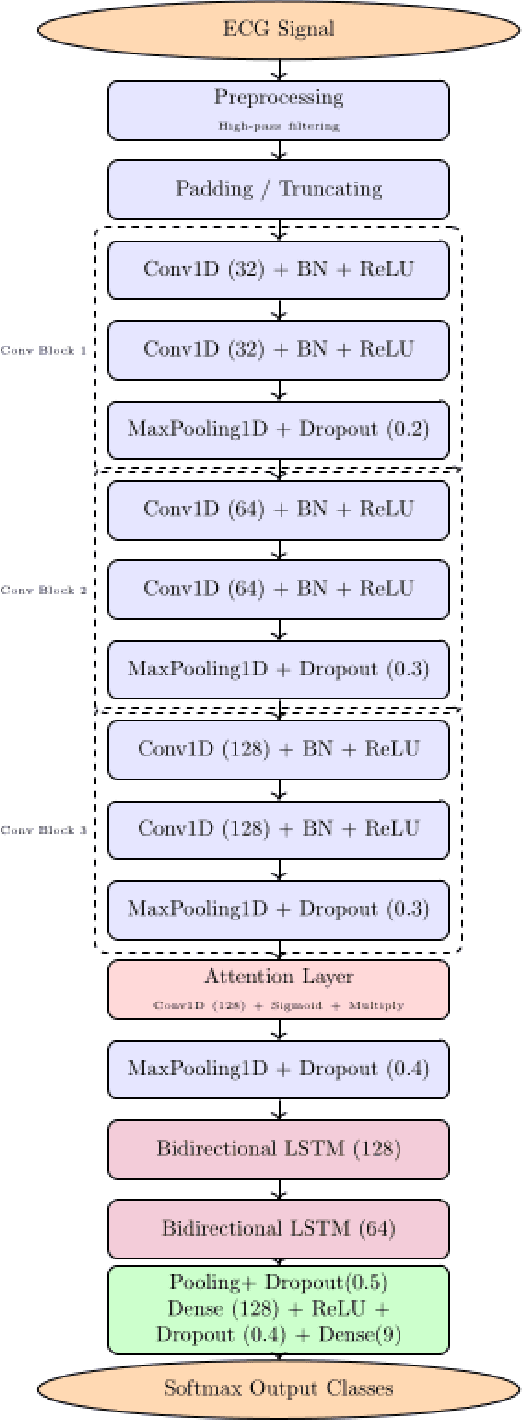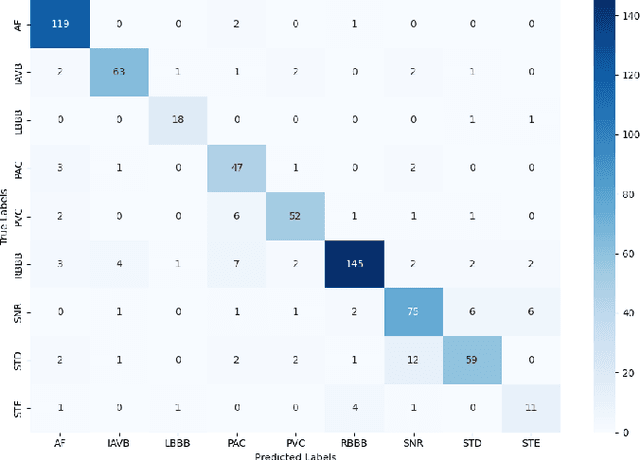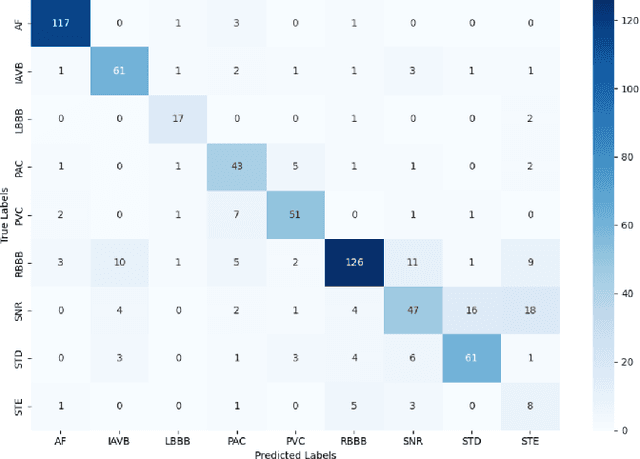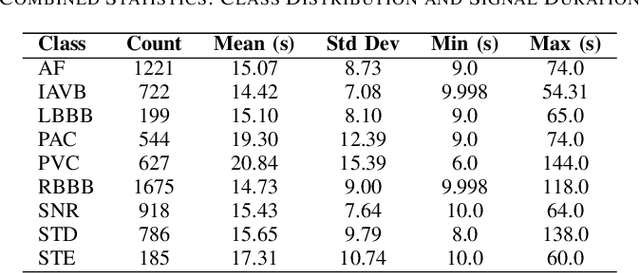Hardik Prajapati
A Lightweight CNN-Attention-BiLSTM Architecture for Multi-Class Arrhythmia Classification on Standard and Wearable ECGs
Nov 11, 2025



Abstract:Early and accurate detection of cardiac arrhythmias is vital for timely diagnosis and intervention. We propose a lightweight deep learning model combining 1D Convolutional Neural Networks (CNN), attention mechanisms, and Bidirectional Long Short-Term Memory (BiLSTM) for classifying arrhythmias from both 12-lead and single-lead ECGs. Evaluated on the CPSC 2018 dataset, the model addresses class imbalance using a class-weighted loss and demonstrates superior accuracy and F1- scores over baseline models. With only 0.945 million parameters, our model is well-suited for real-time deployment in wearable health monitoring systems.
Temporally Consistent Dynamic Scene Graphs: An End-to-End Approach for Action Tracklet Generation
Dec 03, 2024



Abstract:Understanding video content is pivotal for advancing real-world applications like activity recognition, autonomous systems, and human-computer interaction. While scene graphs are adept at capturing spatial relationships between objects in individual frames, extending these representations to capture dynamic interactions across video sequences remains a significant challenge. To address this, we present TCDSG, Temporally Consistent Dynamic Scene Graphs, an innovative end-to-end framework that detects, tracks, and links subject-object relationships across time, generating action tracklets, temporally consistent sequences of entities and their interactions. Our approach leverages a novel bipartite matching mechanism, enhanced by adaptive decoder queries and feedback loops, ensuring temporal coherence and robust tracking over extended sequences. This method not only establishes a new benchmark by achieving over 60% improvement in temporal recall@k on the Action Genome, OpenPVSG, and MEVA datasets but also pioneers the augmentation of MEVA with persistent object ID annotations for comprehensive tracklet generation. By seamlessly integrating spatial and temporal dynamics, our work sets a new standard in multi-frame video analysis, opening new avenues for high-impact applications in surveillance, autonomous navigation, and beyond.
A Tiny Machine Learning Model for Point Cloud Object Classification
Mar 20, 2023



Abstract:The design of a tiny machine learning model, which can be deployed in mobile and edge devices, for point cloud object classification is investigated in this work. To achieve this objective, we replace the multi-scale representation of a point cloud object with a single-scale representation for complexity reduction, and exploit rich 3D geometric information of a point cloud object for performance improvement. The proposed solution is named Green-PointHop due to its low computational complexity. We evaluate the performance of Green-PointHop on ModelNet40 and ScanObjectNN two datasets. Green-PointHop has a model size of 64K parameters. It demands 2.3M floating-point operations (FLOPs) to classify a ModelNet40 object of 1024 down-sampled points. Its classification performance gaps against the state-of-the-art DGCNN method are 3% and 7% for ModelNet40 and ScanObjectNN, respectively. On the other hand, the model size and inference complexity of DGCNN are 42X and 1203X of those of Green-PointHop, respectively.
S3I-PointHop: SO-Invariant PointHop for 3D Point Cloud Classification
Feb 22, 2023Abstract:Many point cloud classification methods are developed under the assumption that all point clouds in the dataset are well aligned with the canonical axes so that the 3D Cartesian point coordinates can be employed to learn features. When input point clouds are not aligned, the classification performance drops significantly. In this work, we focus on a mathematically transparent point cloud classification method called PointHop, analyze its reason for failure due to pose variations, and solve the problem by replacing its pose dependent modules with rotation invariant counterparts. The proposed method is named SO(3)-Invariant PointHop (or S3I-PointHop in short). We also significantly simplify the PointHop pipeline using only one single hop along with multiple spatial aggregation techniques. The idea of exploiting more spatial information is novel. Experiments on the ModelNet40 dataset demonstrate the superiority of S3I-PointHop over traditional PointHop-like methods.
 Add to Chrome
Add to Chrome Add to Firefox
Add to Firefox Add to Edge
Add to Edge